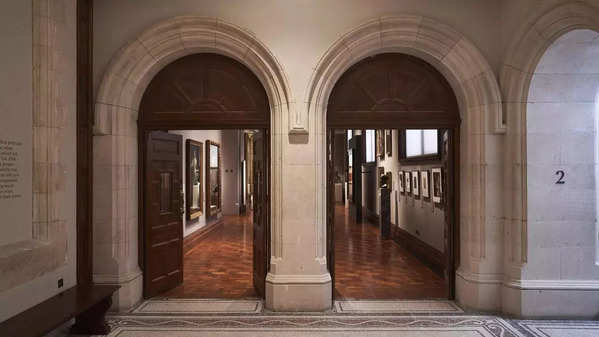Britain's new faith museum explores 6,000 years of belief

22-Sep-2023 02:00 AM
Early visitors have described experiencing emotional and cathartic responses in seeing immersive work by artist Mat Collishaw , much to his delight. Collishaw said, "That would be the ultimate reward. If someone can take some sort of solace from the work, then that really is amazing”, the Guardian reports. Collishaw's installation features a blue iris engulfed by flames, accompanied by a haunting choral soundtrack. Remarkably, the iris remains unconsumed by the flames, inviting visitors to contemplate this moment as a metaphor for the death of Christ or a martyr. This artwork is a part of the unique museum set to open its doors in Bishop Auckland, County Durham, this October 7. The museum is dedicated to exploring 6,000 years of faith in Britain and showcases over 250 objects, including the historically significant Binchester ring, one of the earliest examples of Christian symbolism discovered in Britain. Upstairs, visitors will find a curated collection of contemporary artworks delving into themes of faith. These include works by artists such as the Singh twins, the late Khadija Saye, who tragically lost her life in the Grenfell Tower fire, and Collishaw himself, a prominent figure among the Young British Artists (YBAs). Collishaw's presence in a museum of faith is particularly intriguing due to his upbringing in the Dawn Christadelphian sect, which holds the belief that the Bible represents the sole truth. He described his upbringing as "hardcore," with no Christmas celebrations and a strict prohibition on television. Despite these restrictions, Collishaw remembers his childhood fondly, emphasising that he found more value in reading about Nebuchadnezzar than in watching popular television shows. Collishaw believes that his upbringing has subconsciously influenced his art, which often draws upon historical concepts, likely stemming from his deep sense of history instilled during his upbringing. The Faith Museum is a significant addition to the Auckland Project, a cultural regeneration initiative spearheaded by wealthy asset manager Jonathan Ruffer in the post-industrial town of Bishop Auckland. The Auckland Project already boasts a "Prado of the north" Spanish art gallery, a mining art gallery, and a castle housing remarkable paintings by Francisco de Zurbarán depicting Jacob and his 12 sons. The planning of the Faith Museum spanned a decade and faced numerous challenges along the way. Approximately two-thirds of the objects on display are loans, including items from esteemed institutions like the British Museum and the V&A. Among the treasures is the Bodleian bowl, a rare artefact from mediaeval England's Jewish population, expelled by Edward I in 1290. Modern objects are also featured, including an early 1900s Salvation Army bonnet that resembles a helmet, reflecting the challenges "soldiers" faced when preaching and playing their loud brass instruments in the face of hostility and even bricks. The museum aims to be inclusive, welcoming visitors regardless of their faith or belief systems. One exhibit highlights the changing landscape of faith in England and Wales, with statistics indicating that the percentage of people claiming to have no faith has risen from 15% in 2001 to 37% two decades later. Jonathan Ruffer, the driving force behind the Auckland Project hopes the museum will not only assist the "faith hesitant" on their journeys but also challenge those with unwavering beliefs to reconsider their perspectives.